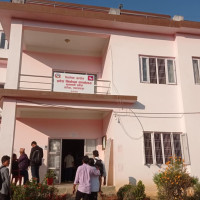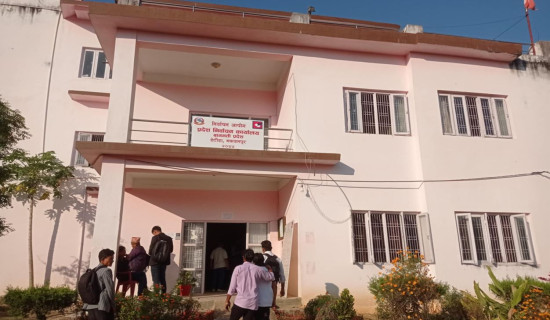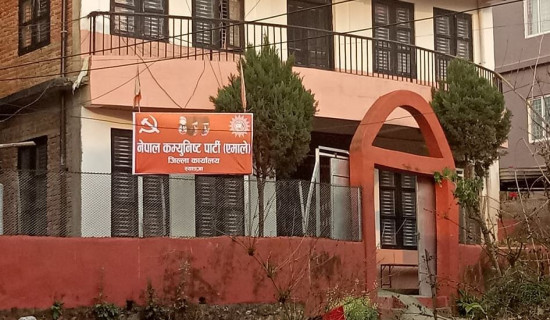- Monday, 1 December 2025
Pundits busy making clay lamps
By Jaya Krishna Yadav,Inaruwa, Oct. 10: As the Dashain festival concludes, Pundits of the Kumbhar community in Inaruwa, Sunsari, are busy making clay lamps (diyos) and pots (Kalash) for the upcoming second major festival, Tihar.
During Tihar, most Hindu households use clay lamps and pots for Laxmi Puja, which leads to a sharp rise in demand for these items in the market.
To meet this growing demand, members of the Kumbhar community in Inaruwa are working tirelessly to produce enough clay lamps and pots.
According to Pramod Pundit, a teacher from Inaruwa-2, the demand for clay lamps and clay pots has surged along with other festive items like fruits, garlands made of marigold and globe amaranth flowers, and ‘Bhai masala’ for Bhai Tika.
He said, “With just a week left for Tihar, if we cannot supply enough clay lamps and pots by then, our effort will go in vain.”
He added that many potters are working day and night to honour their ancestral craft while also earning a good income.
Local potter Dhubra Pundit said that these days, members of the Kumbhar community in Inaruwa’s Bihibare area spend their entire day making clay lamps and pots.
Due to the high demand for clay lamps during Tihar, they have temporarily stopped making other clay utensils.
Since clay lamps and pots are in demand even from outside the district for Laxmi Puja, the potters have put aside the production of larger pots, flower vases, incense holders, piggy banks, and other decorative clay items to focus solely on clay lamps and pots.
“We start our day early in the morning with tea and breakfast, then prepare the clay we kneaded the previous day. We make clay lamps and pots, dry them, and fire them in the kiln before sending them to market,” said a local potter. “We have no time right now to make other items,” he added.
Not only the potters from Inaruwa Municipality, but also those from Harinagar, Gadhi, and Barju rural municipalities are engaged in the same work, setting aside their regular pottery production.
Tihar, the festival dedicated to Goddess Laxmi, is celebrated with fruits, flowers, and the lighting of bright lamps.
People light clay lamps and electric lights at their doors, windows, rooftops, and balconies to invite the goddess of wealth into their homes.
This tradition has made the season especially busy for the potter community, as it is a good business opportunity.
In recent years, the demand for electric decorative lights has also increased. However, despite the popularity of colourful electric lights, lighting traditional clay lamps remains a mandatory part of the festival. Traders said that the demand for clay lamps continues to rise every year.
According to Shiv Narayan Pundit, a trader from Inaruwa, “Although candles became popular for a few years, they were gradually replaced as candles were not as safe as clay lamps."
The demand for clay lamps has increased again, he added, “Compared to modern electric or wax lights, clay lamps are considered more sacred and safer from a religious and cultural perspective, which is why their market demand has grown tremendously.”
The clay lamps produced in the district are supplied to local markets, and any surplus is sold to traders who distribute them outside the district as well.
Around 50 households of the Pundits of the Kumbhar community in Bihibare Haat, Inaruwa-2, are currently engaged in pottery making.














